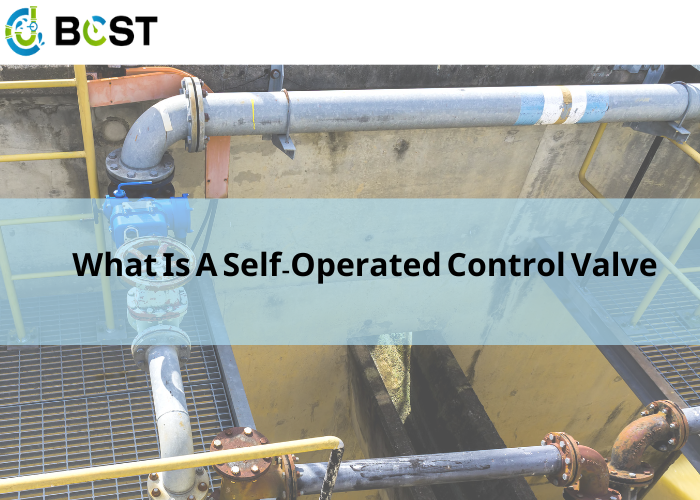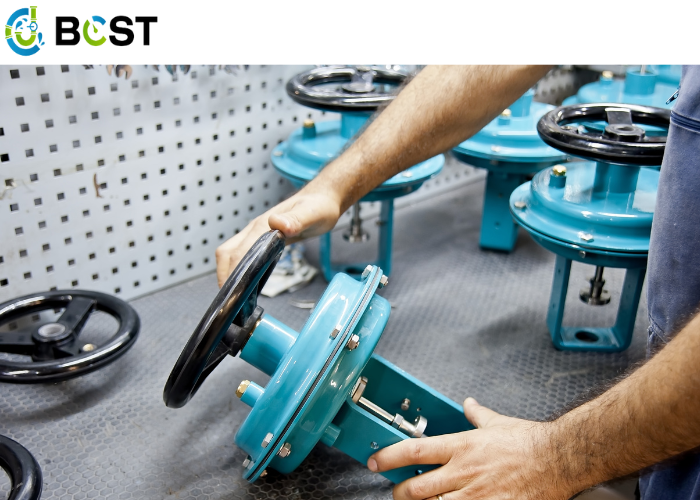
Self-acting control valve is a commonly used fluid control valve that adjusts the valve opening and flow rate based on the pressure or velocity of the fluid itself, without requiring external power or control signals. It is typically used in applications that require simple and reliable fluid control, suitable for controlling various liquids, gases, and steam. The working principle of a self-acting control valve relies on the force exerted on the valve core by the fluid’s pressure or velocity, causing the core to move and change the flow area, thus adjusting the fluid flow. As the fluid pressure or velocity changes, the valve core adjusts its position accordingly to maintain the set flow rate or pressure.
I. Components of a self-acting control valve usually include:
Valve body and valve core: The valve body is the main part installed on the pipeline, while the valve core is located inside the body and regulates the fluid flow by its movement.
Spring or adjustment plate: These components are used to adjust the position and opening of the valve core in response to changes in fluid pressure or velocity.
Adjustment device: Used for manual or automatic adjustment of the valve core position to achieve precise flow control.
II. Selection of self-acting control valves:
When selecting a self-acting control valve, various factors need to be considered, including fluid properties, flow rate requirements, operating environment, and control methods. Here are some general guidelines for selection:
Fluid properties: Understand the nature of the fluid to be controlled, including medium, temperature, pressure, and velocity. Different fluids have specific requirements for valve materials and sealing performance, so choose suitable materials based on fluid properties.
Flow rate requirements: Determine the flow rate range and control accuracy needed for the fluid. Select the appropriate valve size and flow coefficient to ensure the valve meets the system’s flow control requirements.
Operating environment: Consider factors such as temperature, pressure, corrosion, and vibration in the valve’s operating environment. Choose valve materials resistant to high temperatures and corrosion, and consider the stability and reliability of the valve structure.
Control method: Identify the type and method of control signal, such as analog or digital signals, and interface requirements of the control system. Choose the appropriate actuator type, such as pneumatic or electric actuators, based on the control method.
Safety requirements: If the system where the valve is installed has special safety requirements, consider the valve’s safety performance, such as closing speed and emergency shutdown function.
Economic and maintainability: Besides meeting technical requirements, consider the valve’s cost-effectiveness and ease of maintenance, choosing a product that is cost-effective and easy to maintain.
III. Installation steps for self-acting control valves:
The installation of self-acting control valves should follow specific steps and standards to ensure the valve operates correctly and meets the fluid control system’s requirements. Here are general installation steps:
Preparation: Before installing the valve, prepare the necessary installation tools and equipment and check the valve for any damage.
Determine installation position: Based on system design requirements and pipeline layout, determine the valve’s installation position to allow for easy operation and maintenance and meet fluid control needs.
Pipeline preparation: Prepare the pipeline at the installation location, including cleaning the inside of the pipeline, ensuring accurate pipe alignment, and applying necessary anti-corrosion treatments.
Install the valve: Install the self-acting control valve in the correct direction and position on the pipeline, securely connecting the valve to the pipeline using appropriate fittings.
Seal treatment: Seal the valve connections to prevent leakage effectively and meet relevant safety standards.
Adjust valve position: Adjust the position and opening of the self-acting control valve according to the actual requirements to meet the system’s flow or pressure control needs.
Connect actuator: If the self-acting control valve is equipped with an actuator, follow the instructions to connect the actuator and perform necessary debugging and adjustment.
System testing: After installation, test the self-acting control valve system to ensure it operates correctly and meets fluid control requirements.
Identification and record: After installation, place clear identification near the valve, indicating the valve type, specifications, installation date, and other relevant information, and maintain related records and documents.

IV. Industry applications of self-acting control valves:
Self-acting control valves are widely used in various industrial sectors and fluid control systems to control fluid medium flow, pressure, temperature, and other parameters. Here are some common industry applications of self-acting control valves:
Chemical industry: Used to control the flow, pressure, and temperature of various chemical media in chemical production processes to ensure process stability and product quality.
Oil and gas industry: Widely applied in oil extraction, refining, and natural gas transportation to control pipeline fluid flow and pressure, ensuring system safety and efficiency.
Power industry: Used in thermal power plants and nuclear power stations to control boiler and steam system flow and pressure and regulate cooling water system temperature and pressure.
Pharmaceutical industry: Applied in pharmaceutical production processes to control fluid media accurately, ensuring precise process control and compliance requirements.
Food and beverage industry: Used in food processing and beverage production to control raw materials, ingredients, and finished product flow and pressure, maintaining product quality and hygiene standards.
HVAC industry: In heating, ventilation, and air conditioning systems, self-acting control valves control the flow and temperature of cooling water, heating water, and refrigerants, regulating building temperature and humidity.
Water treatment industry: In wastewater treatment plants, water supply systems, and industrial water treatment processes, self-acting control valves control the flow and pressure of sewage, clean water, and treatment fluids, maintaining system balance and operational efficiency.
V. Conclusion:
Self-acting control valves are essential fluid control valves that adjust based on the fluid’s pressure or velocity without needing external power or control signals. When selecting these valves, factors such as fluid properties, flow rate requirements, operating environment, and control methods must be considered, while also ensuring economic and maintainability aspects. Self-acting control valves find applications in various industries, ensuring stable production processes and product quality. During installation, following the relevant standards and guidelines is crucial to ensure proper valve operation and system safety. For more specific installation guidance and technical support, consulting professional valve suppliers or engineers is recommended.






